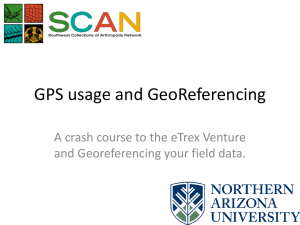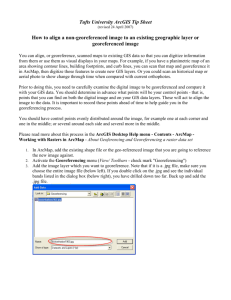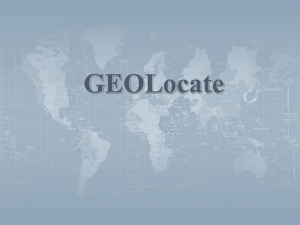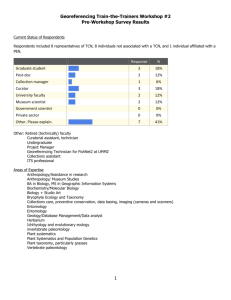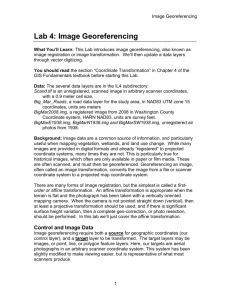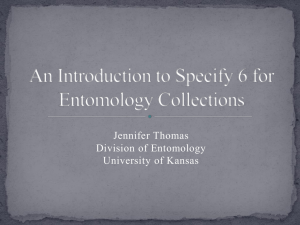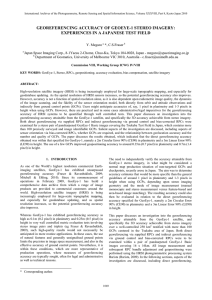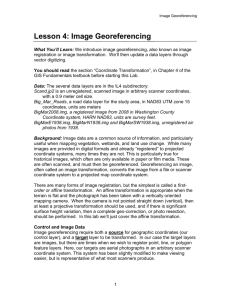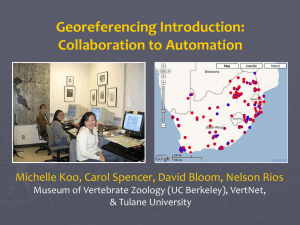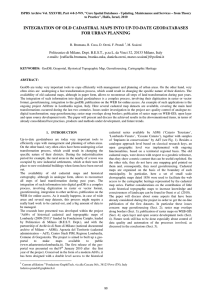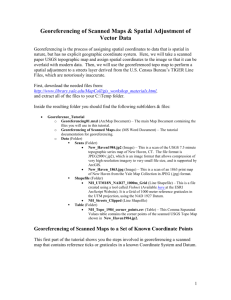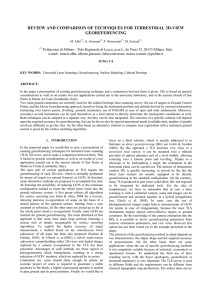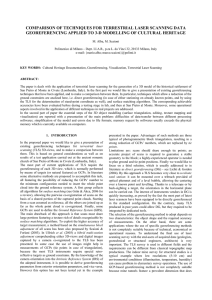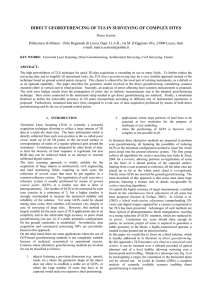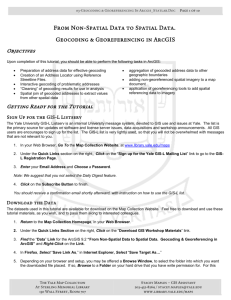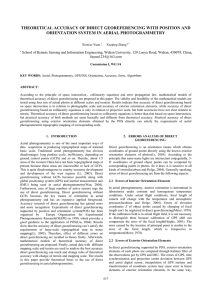Chapter 3 - WHFreeman
advertisement
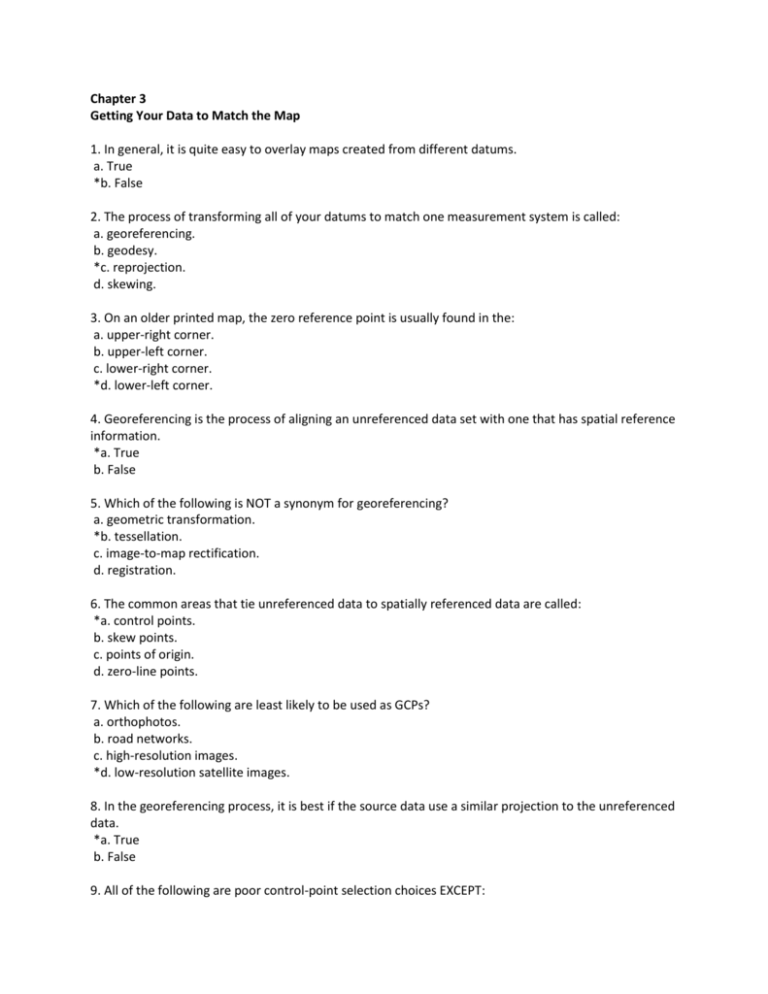
Chapter 3 Getting Your Data to Match the Map 1. In general, it is quite easy to overlay maps created from different datums. a. True *b. False 2. The process of transforming all of your datums to match one measurement system is called: a. georeferencing. b. geodesy. *c. reprojection. d. skewing. 3. On an older printed map, the zero reference point is usually found in the: a. upper-right corner. b. upper-left corner. c. lower-right corner. *d. lower-left corner. 4. Georeferencing is the process of aligning an unreferenced data set with one that has spatial reference information. *a. True b. False 5. Which of the following is NOT a synonym for georeferencing? a. geometric transformation. *b. tessellation. c. image-to-map rectification. d. registration. 6. The common areas that tie unreferenced data to spatially referenced data are called: *a. control points. b. skew points. c. points of origin. d. zero-line points. 7. Which of the following are least likely to be used as GCPs? a. orthophotos. b. road networks. c. high-resolution images. *d. low-resolution satellite images. 8. In the georeferencing process, it is best if the source data use a similar projection to the unreferenced data. *a. True b. False 9. All of the following are poor control-point selection choices EXCEPT: a. the center of a field. *b. the intersection of roads. c. the shoreline of a beach. d. a landscape display. 10. When selecting control points, it is best to cluster them in one area of the map. a. True *b. False 11. In georeferencing, what is the minimum number of control points required to fit an unreferenced image to the source? a. 1 b. 2 *c. 3 d. 4 12. Which type of transformation entails pulling the image, often at a slant? a. rotation b. transition c. differential scaling *d. skewing 13. Which type of transformation entails altering the location and placement of a map? a. rotation *b. translation c. differential scaling d. skewing 14. The affine transformation is a first-order transformation. *a. True b. False 15. In general, the higher the RMSE, the better the match between the unreferenced data and the source data. a. True *b. False 16. Which of the following is not an example of an online resource for georeferenced historical maps? a. David Rumsey Historical Map Collection. b. New York Public Library Map Warper. c. British Library Online Gallery. *d. Wikimapia 17. “On the fly” projection automatically and permanently transforms the base data to a common projection. a. True *b. False 18. If you use a photo scanner to scan an old map, then open the image in a GIS with data for the same location, the image will: a. “snap” to the correct location automatically. *b. not match up because it lacks any spatial reference. c. float over the data until you assign a datum. d. appear mirrored and upside-down. 19. Latitude and longitude can always be used to reference locations, even on data that has not yet been georeferenced. a. True *b. False 20. Which of the following techniques can be used to identify GCPs? a. Surveying in the field. b. GPS measurements. c. Matching locations on the image with an orthophoto. *d. All of the above. 21. Assuming your control points are well chosen, adding more points should: *a. improve the fit between the unreferenced data and the source. b. improve the RMSE value by increasing it considerably. c. decrease the fit between the unreferenced data and the source. d. eliminate the RMSE entirely. 22. RMSE stands for: a. referenced map source error. b. Rumsey-Maynes signal error. *c. root mean square error. d. resampling error. 23. During georeferencing, new locations for an image’s pixels are calculated, and sometimes new pixel values are needed as well. *a. True b. False 24. Georeferencing can be used for non-map data, including unreferenced drawings and plans. *a. True b. False 25. Image-to-map rectification requires expensive software, usually not available to the public. a. True *b. False
